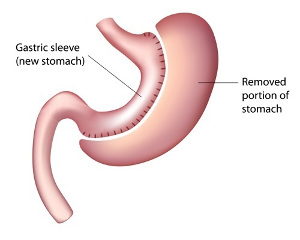A gastric bypass is a combination of restrictive and malabsorptive surgery. A gastric sleeve is an example of a restrictive surgery. In addition to these two well-known surgeries, there are other forms of obesity surgery.
Gastric bypass:
With the gastric bypass, the stomach is divided into a mini stomach and a residual stomach. The mini stomach is connected to the small intestine. As a result, part of the digestive tract is diverted (bypass). This causes a shortening of the small intestine. By this surgery, food is passed around the stomach. The food first enters in a small stomach reservoir, after which it ends up in the small intestine via a new connection. The gastric bypass reduces the patient’s hunger and causes the body to digest less food. Patients lose weight not only because they are satisfied faster, but also because of the digestion of the food starts working later.

Gastric sleeve:
A gastric sleeve is a surgery in which a large part of the stomach (up to 80%) is surgically removed, leaving a narrow, tubular, sleeve-shaped stomach. Food still passes through the stomach in the normal way, but because it is much smaller, the patient’s feeling of hunger diminishes much more quickly, which means that the patient will eat less.

